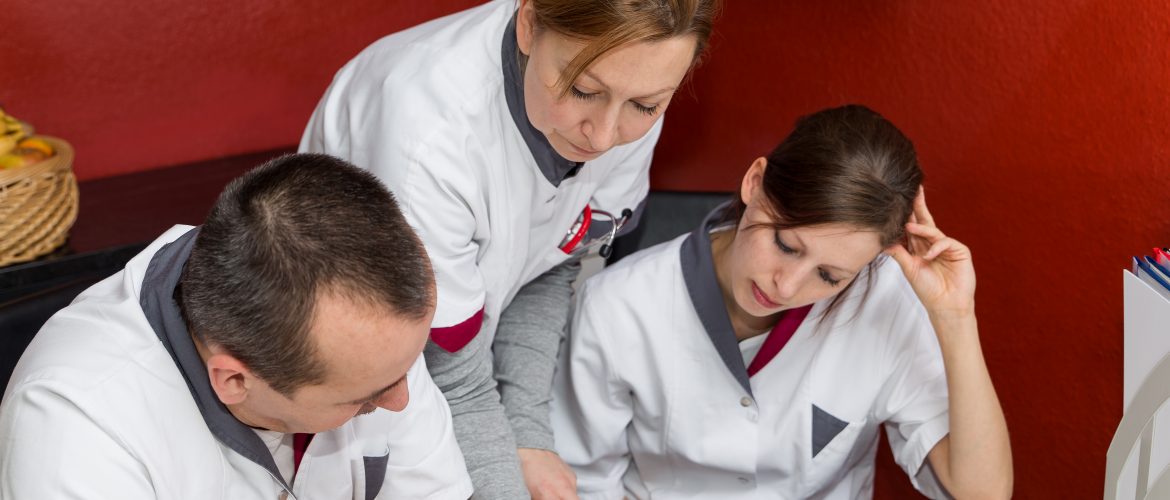On March 10, 2021, the Centers for Medicare & Medicaid Services (CMS) revised their recommendations for visitation guidance on nursing homes during the COVID-19 public health emergency. The guidance was developed in conjunction with the Centers for Disease Control and Prevention (CDC) and recognizes the impact of the COVID-19 vaccination.
The Core Principles of COVID-19 Infection Prevention and best practices continue to be emphasized to reduce the risk of COVID-19 transmission. The Core Principles of COVID-19 Infection Prevention can be accessed at: Preparing for COVID-19 in Nursing Homes | CDC. They include the following:
- Screening of all who enter the facility for signs and symptoms of COVID-19 (e.g., temperature checks, questions about and observations of signs or symptoms), and
- Denial of entry of those with signs or symptoms or those who have had close contact with someone with COVID-19 infection in the prior 14 days (regardless of the visitor’s vaccination status).
CMS continues to recommend visits should be held outdoors whenever practicable, since outdoor visitation poses a lower risk of transmission due to increased space and airflow. Outdoor visits are preferred even when the resident and visitor are both fully vaccinated against COVID-19. Fully vaccinated refers to a person who is ≥2 weeks following receipt of the second dose in a 2-dose series, or ≥2 weeks following receipt of one dose of a single-dose vaccine, per the CDC’s Public Health Recommendations for Vaccinated Persons.
Facilities can allow indoor visitation at all times and for all residents (regardless of vaccination status), except for a few circumstances when visitation should be limited due to a high risk of COVID-19 transmission. Compassionate care visits should be permitted at all times. The Core Principles of COVID-19 Infection Prevention should be consistently adhered to. The circumstances which should limit indoor visitation include:
- Unvaccinated residents, if the nursing home’s COVID-19 county positivity rate is >10% and <70% of residents in the facility are fully vaccinated;
- Residents with confirmed COVID-19 infection, whether vaccinated or unvaccinated, until they have met the 2 criteria to discontinue Transmission-Based Precautions; or
- Residents in quarantine, whether vaccinated or unvaccinated, until they have met criteria for release from quarantine.
When a new case of COVID-19 among residents or staff is identified, a facility should immediately begin outbreak testing and suspend all visitation (except that required under federal disability rights law) until at least one round of facility-wide testing is completed. Visitation can resume based on the following criteria:
- If the first round of outbreak testing reveals no additional COVID-19 cases in other areas (e.g., units) of the facility, then visitation can resume for residents in areas/units with no COVID-19 cases. However, the facility should suspend visitation on the affected unit until the facility meets the criteria to discontinue outbreak testing.
- For example, if the first round of outbreak testing reveals two more COVID-19 cases in the same unit as the original case, but not in other units, visitation can resume for residents in areas/units with no COVID-19 cases.
- If the first round of outbreak testing reveals one or more additional COVID-19 cases in other areas/units of the facility (e.g., new cases in two or more units), then facilities should suspend visitation for all residents (vaccinated and unvaccinated) until the facility meets the criteria to discontinue outbreak testing.
In all cases, visitors should be notified about the potential for COVID-19 exposure in the facility. CMS does recommend that all visitors become vaccinated when they have the opportunity, but this should not be required, or they should show proof of the COVID-19 vaccine as a condition of their visitation. In addition, CMS recommends that facilities in medium-or high-positivity counties offer testing to visitors, if feasible. If a facility does offer testing, they should prioritize visitors that visit regularly, although any visitor may be tested. Facilities may continue to encourage visitors to be tested on their own prior to coming to the facility (e.g., within 2-3 days before the visit).
All visits should be conducted using social distancing; however, if during a compassionate care visit, a visitor and facility identify a way to allow for personal contact, it should only be done following appropriate infection prevention guidelines, and for a limited amount of time. As noted above, if the resident is fully vaccinated, they can choose to have close contact (including touch) with their visitor while wearing a well-fitting face mask and performing hand-hygiene before and after. Regardless, visitors should physically distance from other residents and staff in the facility.
The QSO-20-39-NH memo with revisions of March 10, 2021 can be accessed at: QSO-20-39-NH Revised (cms.gov).
Issue:
While the safety of residents and staff is always a priority, the COVID-19 vaccines have allowed the opportunity to become less stringent with visitation requirements. The Core Principles of COVID-19 Infection Prevention should be continued and followed at all times to help reduce the likelihood of the spread of COVID-19. Although the COVID-19 vaccination should be encouraged for all residents, staff, and visitors, it is not a requirement for visitations to occur. In states that have specific additional visitation requirements or restrictions, those must be incorporated into facility protocols.
Discussion Points:
- Review your polices and procedures for visitation during the continuing pandemic. Update your policy as needed to incorporate CMS revised guidelines.
- Train all staff on the updated visitation policy and procedures. Document that these trainings occurred and file in each employee’s education file. In addition, ensure that residents and families are aware of the revised visitation policy and procedures.
- Periodically audit to ensure that during visitations, the Core Principles of COVID-19 Infection Prevention are adhered to at all times, and that the revised CMS guidelines are followed.












































































